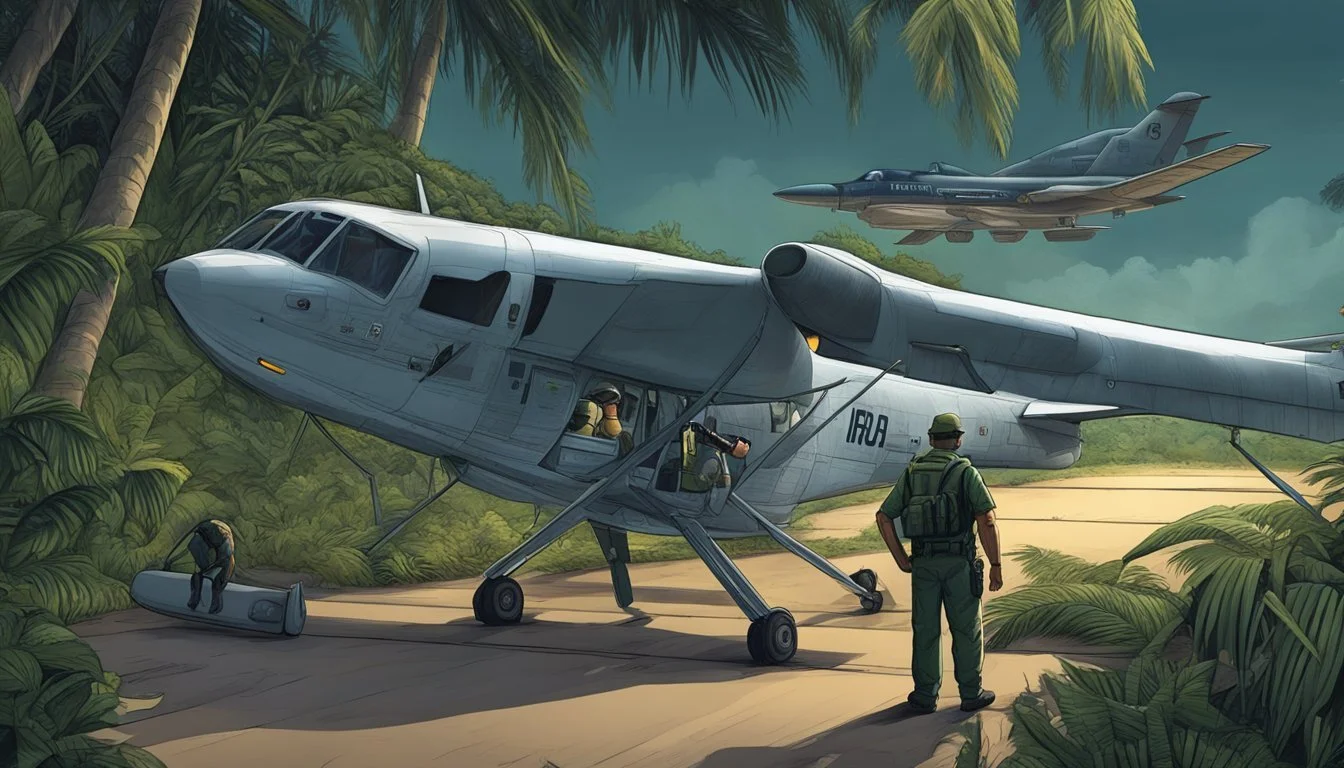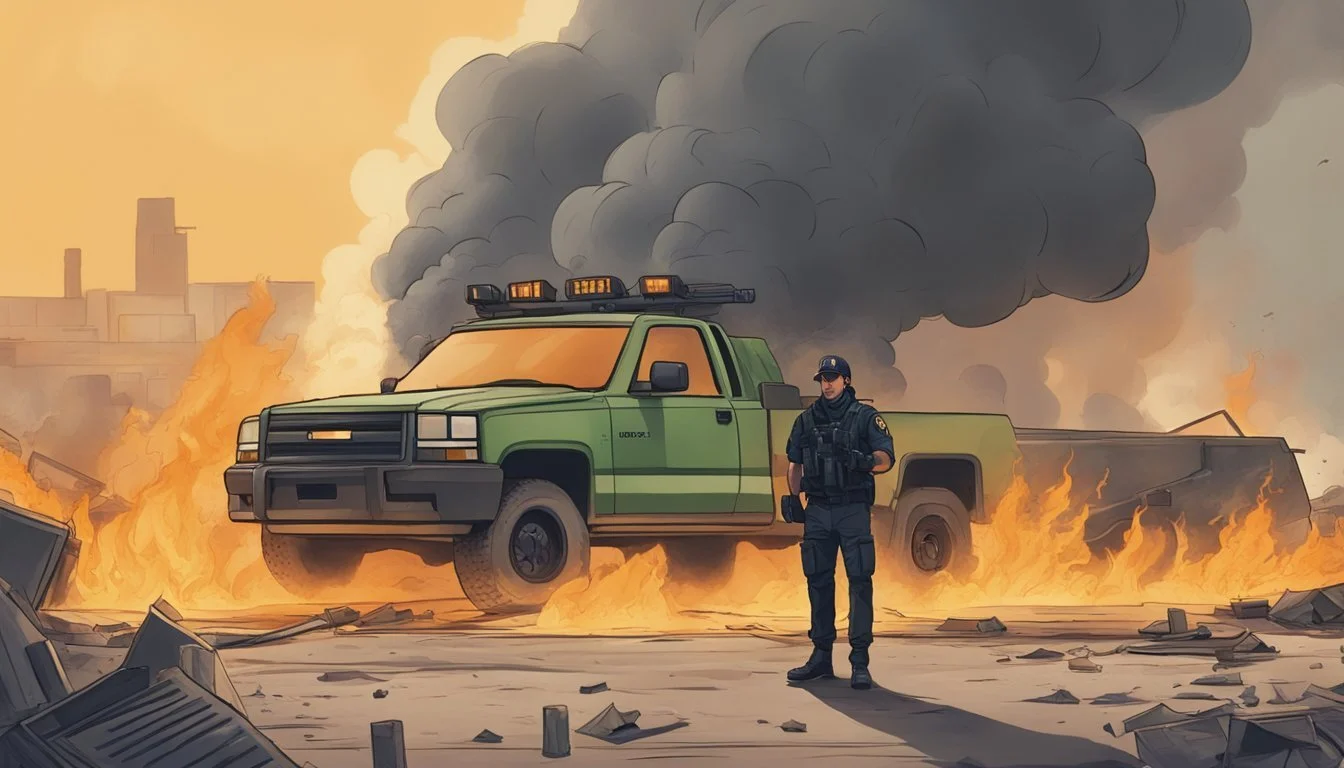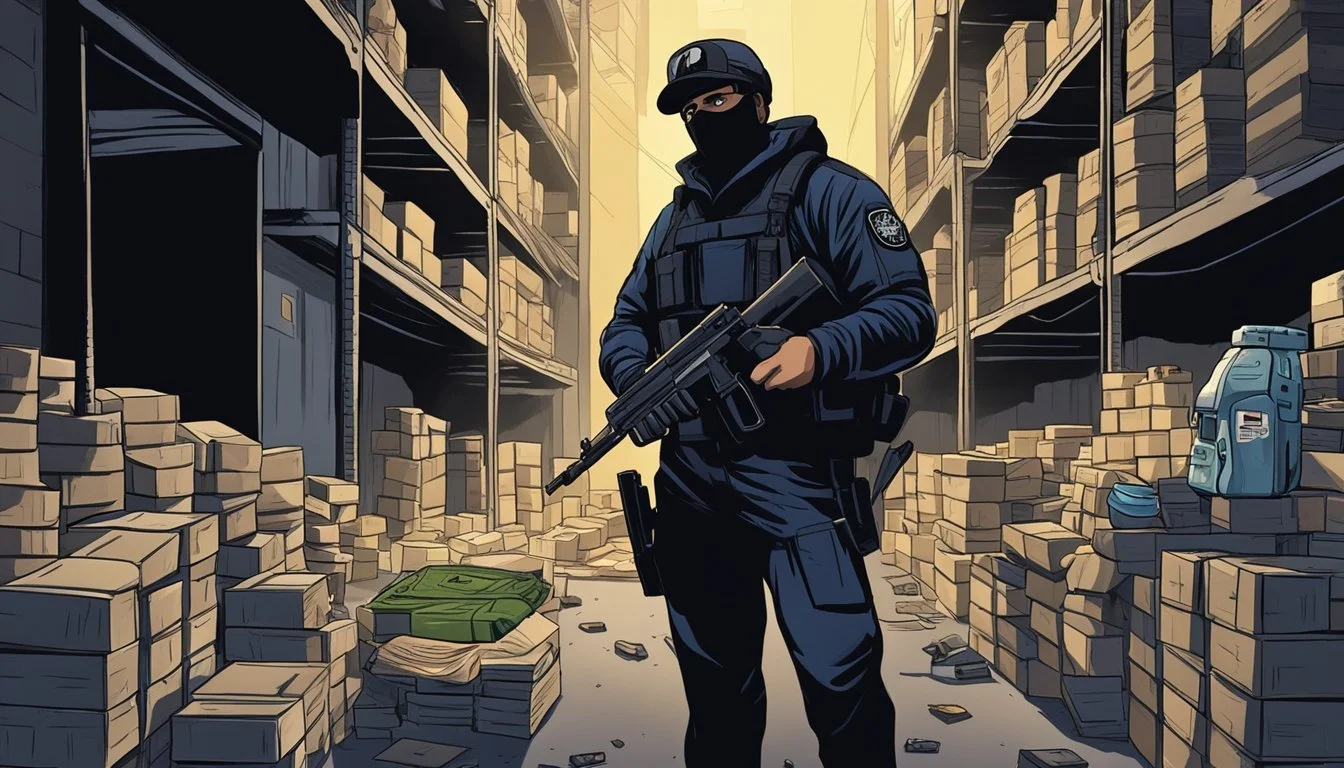Crushing the Cartel: The Real DEA Agent Who Inspired Jack Ryan's Mission
The thrilling world of drug cartels and covert operations depicted in Tom Clancy's "Clear and Present Danger" captivated audiences in both novel and film form. While the story is fictional, it draws inspiration from real-life events and figures in the ongoing war against drug trafficking.
At the heart of this inspiration lies the story of Enrique "Kiki" Camarena, a DEA agent who worked tirelessly to combat drug cartels in Mexico during the 1980s. Camarena's dedication and ultimate sacrifice in the line of duty served as a catalyst for increased efforts to dismantle drug trafficking organizations and inspired elements of Clancy's gripping narrative.
The novel and subsequent film adaptation starring Harrison Ford brought the dangerous world of cartel operations and government counter-measures to life for millions of readers and viewers. By exploring the connections between fiction and reality, we gain a deeper appreciation for the brave individuals who risk their lives to combat the drug trade and the complex challenges they face in their pursuit of justice.
The DEA Agent: Inspiration for 'Clear and Present Danger'
The real-life experiences of a Drug Enforcement Administration agent in Mexico during the 1980s served as inspiration for Tom Clancy's novel "Clear and Present Danger." This agent's dangerous work against drug cartels closely mirrors the fictional events portrayed in the book and subsequent film adaptation.
Biography of the Real DEA Agent
Enrique "Kiki" Camarena worked as a DEA agent in Mexico in the mid-1980s. He was born in Mexicali, Mexico in 1947 and later moved to California. Camarena joined the U.S. Marine Corps before becoming a police officer and eventually a DEA agent in 1974.
In Mexico, Camarena was involved in high-stakes operations targeting major drug trafficking organizations. His work led to significant disruptions in cartel operations and large drug seizures.
Tragically, in 1985 Camarena was kidnapped, tortured, and murdered by drug traffickers in retaliation for his efforts. His death sparked outrage and intensified the U.S. war on drugs.
Connection to Tom Clancy's Work
Tom Clancy drew inspiration from Camarena's experiences when crafting "Clear and Present Danger." The novel's depiction of covert operations against Colombian drug cartels closely parallels real DEA activities in Latin America during the 1980s.
While Clancy's protagonist Jack Ryan is fictional, elements of Camarena's dangerous work in Mexico are reflected in the book's portrayal of American agents battling cartels. The novel captures the high stakes and personal risks faced by real DEA personnel.
Clancy's research into actual DEA operations allowed him to create a thrilling yet grounded narrative. The film adaptation starring Harrison Ford further popularized this fictionalized account of the war on drugs inspired by true events.
Exploring the Mission to Crush the Cartel
The mission to dismantle powerful drug cartels involves complex strategies, historical context, and operational challenges. Law enforcement agencies face significant hurdles in their efforts to combat these criminal organizations.
Historical Context of Cartel Operations
Drug cartels emerged as major players in the narcotics trade during the 1970s and 1980s. Colombian cartels initially dominated cocaine trafficking, while Mexican organizations controlled smuggling routes into the United States.
As enforcement efforts intensified, cartels adapted their tactics. They developed sophisticated money laundering schemes and diversified their criminal activities.
Cartels often exploited weak governmental institutions and poverty in their home countries. This allowed them to gain local support and establish quasi-governmental control in certain regions.
Strategies in 'Clear and Present Danger' Explained
"Clear and Present Danger" portrays covert operations against fictional Colombian drug lords. The film highlights several real-world tactics used by law enforcement agencies.
Intelligence gathering: Wiretaps, informants, and satellite surveillance play crucial roles in identifying cartel leadership and operations.
Interdiction: The movie depicts efforts to intercept drug shipments, a key strategy in disrupting cartel supply chains.
Financial targeting: Freezing assets and tracking money flows aim to cripple cartel finances.
Special operations: The film showcases clandestine military actions, reflecting real-world debates about the use of force in anti-drug efforts.
Operational Challenges and Triumphs
Law enforcement agencies face numerous obstacles in their anti-cartel missions. Corruption within local governments often hinders investigations and prosecutions.
Cartels' vast resources allow them to quickly adapt to new enforcement tactics. They frequently employ advanced technology and sophisticated counter-surveillance methods.
Despite these challenges, agencies have achieved notable successes. Key cartel leaders have been arrested or killed, disrupting organizational structures.
International cooperation has improved, leading to more effective cross-border operations. Financial investigations have successfully frozen billions in illicit assets.
Advances in forensic technology and data analysis have enhanced law enforcement's ability to track and prosecute cartel members.
Impact on Drug Trafficking and Policies
The DEA operation depicted in "Clear and Present Danger" had significant ramifications for drug trafficking and U.S. drug policies. It exposed vulnerabilities in existing strategies and prompted reevaluation of counternarcotics efforts.
Effectiveness of DEA Strategies
The operation revealed both strengths and weaknesses in DEA tactics. Targeted intelligence gathering proved crucial in identifying key cartel figures and distribution networks. Coordinated multi-agency efforts disrupted several major smuggling routes.
However, the mission also highlighted limitations. Cartels quickly adapted to enforcement pressure by shifting operations. Some tactics raised ethical concerns about collateral damage to civilian populations.
DEA agents found success infiltrating lower and mid-level cartel operations. But penetrating top leadership remained challenging due to sophisticated security measures.
Policy Changes Following the Mission
The high-profile operation catalyzed policy shifts. Congress allocated increased funding for border security and surveillance technology. New legislation expanded the DEA's authority to conduct operations on foreign soil.
Policymakers emphasized international cooperation, leading to expanded partnerships with Latin American law enforcement agencies. Prevention and treatment programs received greater focus to address demand-side factors.
Critics argued some policy changes infringed on civil liberties. Debate emerged over balancing security needs with constitutional protections. The DEA faced increased oversight and revised guidelines for covert operations.
Cultural and Cinematic Representation
"Clear and Present Danger" shaped public perception of drug cartels and covert operations. The film's portrayal of CIA activities and Colombian drug lords left a lasting impact on popular culture.
Accuracy of 'Clear and Present Danger'
The movie blends fact and fiction in its depiction of CIA operations against Colombian cartels. While based on Tom Clancy's novel, it takes creative liberties for dramatic effect. The film accurately portrays some aspects of cartel operations and U.S. government responses.
However, it simplifies complex geopolitical issues. The portrayal of high-tech surveillance and covert missions reflects real capabilities but exaggerates their seamless execution. Characters like Jack Ryan are composites, inspired by real agents but dramatized for cinematic appeal.
Influence on Public Perception
"Clear and Present Danger" significantly impacted how the public views drug cartels and covert operations. The film's intense action sequences and political intrigue captivated audiences, shaping their understanding of international drug trade.
It popularized terms like "black ops" and reinforced the image of sophisticated cartel operations. The movie's depiction of moral dilemmas faced by government agents resonated with viewers, prompting discussions about ethics in intelligence work.
Media coverage of real-world drug busts often drew comparisons to scenes from the film, further blurring the lines between fiction and reality in public discourse.
Beyond the Operation: Legacy and Continued Efforts
The DEA's tactics evolved significantly following high-profile operations against drug cartels. These changes shaped modern anti-drug efforts and continue to influence law enforcement approaches today.
Evolution of DEA Tactics
The DEA adapted its strategies in response to lessons learned from past operations. Intelligence gathering became more sophisticated, with increased use of technology and data analysis. Interagency cooperation improved, leading to more coordinated efforts between the DEA, FBI, and international partners.
Undercover operations grew more complex, with agents receiving specialized training to infiltrate cartel networks. The agency also placed greater emphasis on targeting cartel finances, working to disrupt money laundering operations and seize assets.
Risk assessment protocols were enhanced to better protect agents and informants in the field. This included improved vetting procedures and more robust extraction plans for operatives in dangerous situations.
Modern Day Implications and Relevance
Today's DEA continues to build on past experiences in combating drug cartels. The agency now employs advanced surveillance technologies, including drones and satellite imagery, to monitor cartel activities across borders.
Cybercrime units within the DEA focus on tracking online drug sales and cryptocurrency transactions linked to cartels. This digital frontier represents a new battleground in the ongoing war on drugs.
International cooperation remains crucial, with the DEA maintaining a strong presence in key countries affected by drug trafficking. Joint task forces and information sharing agreements have strengthened global efforts to dismantle transnational criminal organizations.
The agency also places increased emphasis on demand reduction strategies, recognizing the need to address drug abuse through education and rehabilitation programs alongside enforcement efforts.



